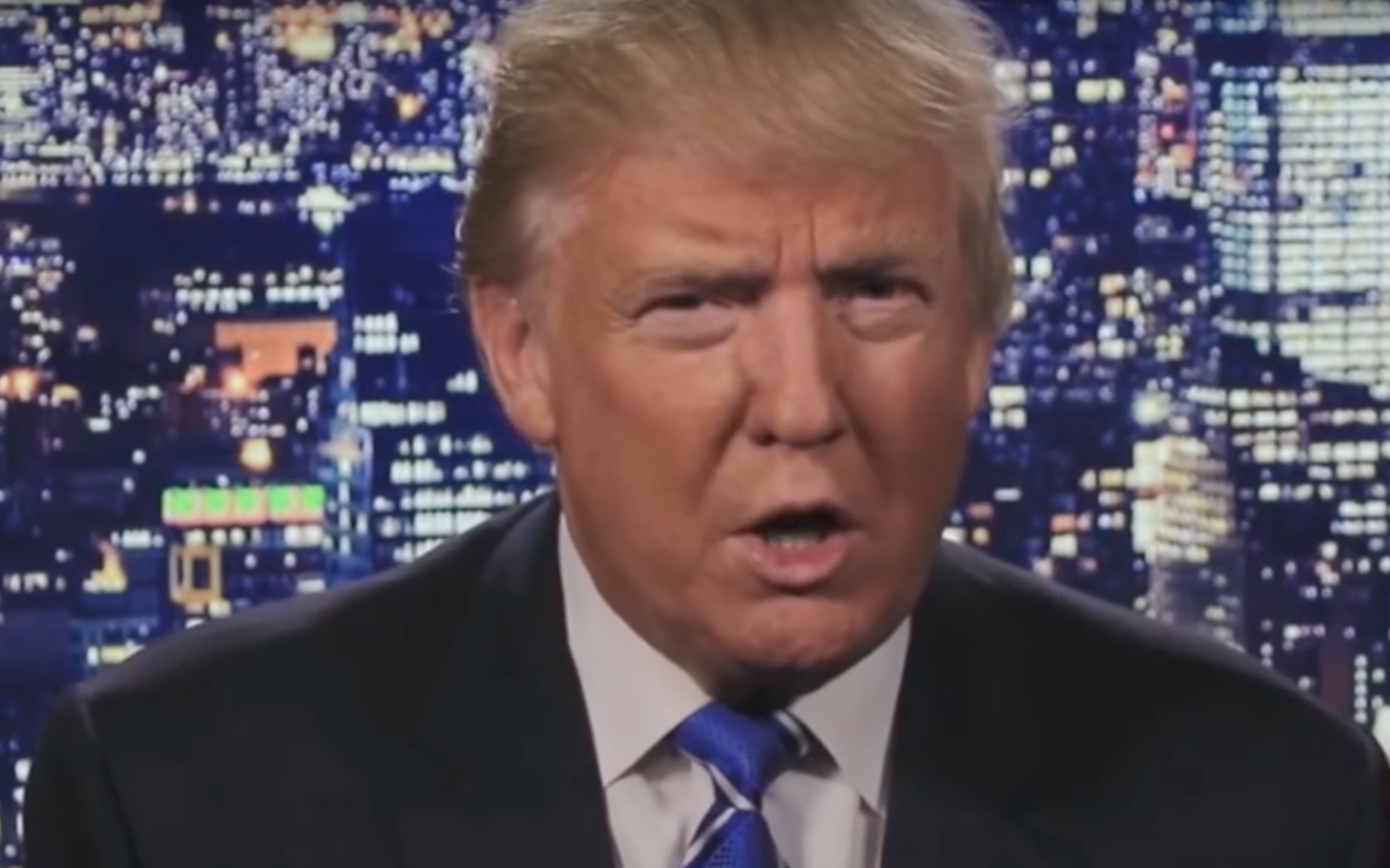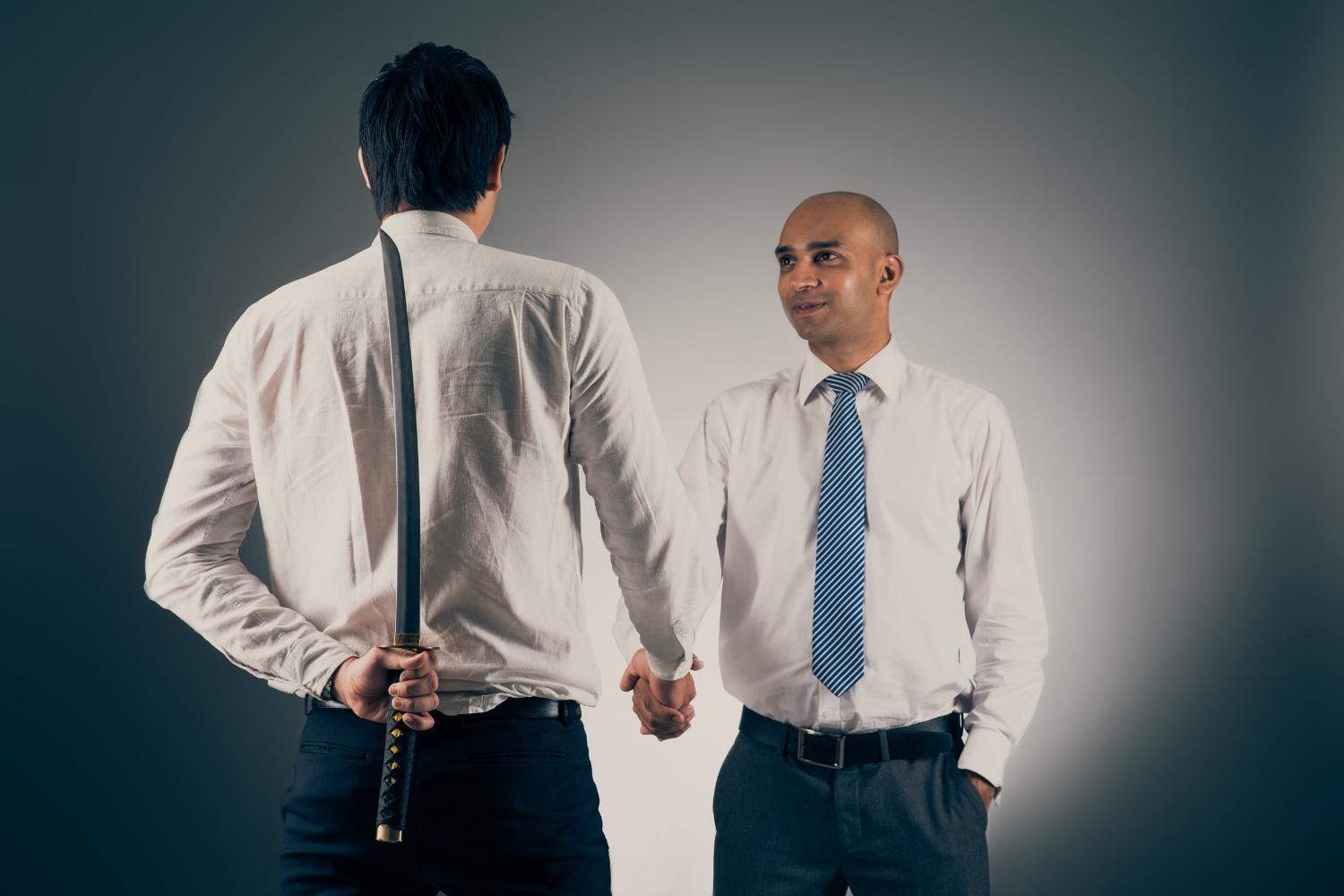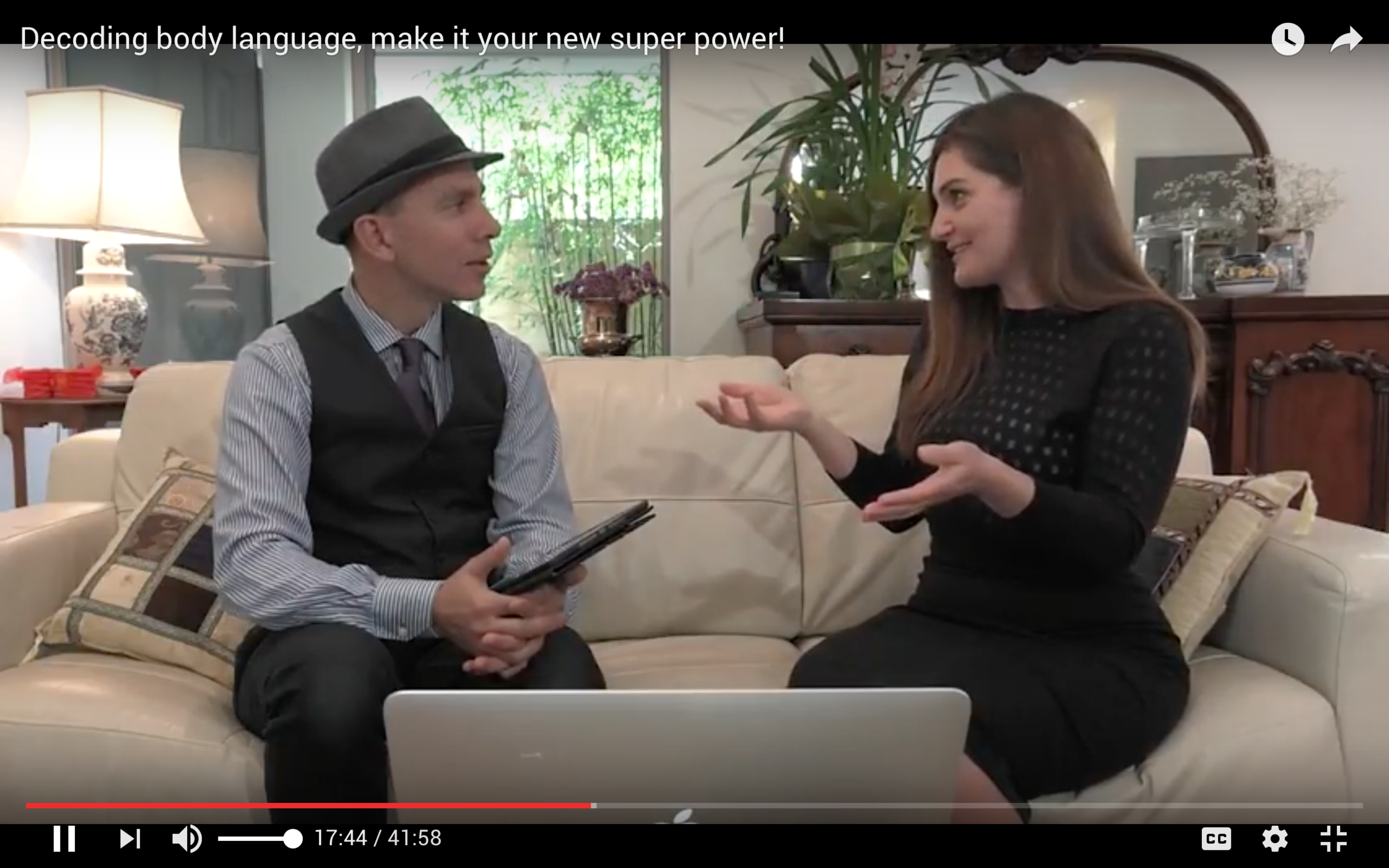
COMMUNICATION, BEHAVIOUR & ART
Body Language & Communication Blog
Ranked in the top 4 body language blogs on the web since 2020.
Our work is based on scientific theories relating to nonverbal behaviour and statement analysis, yet remains the opinion of the author.
Nonverbal Communication: The heart of emotional intelligence
Nonverbal communication plays a large part in emotional intelligence. The most obvious link is in understanding the true feelings of others, based on their nonverbal communication cues; a topic I write about a lot. If you can read these cues, you have the ability to understand their emotions and can therefore adapt and respond appropriately. The latter part of the equation (your response) being the most significant.
Less obvious is that understanding, and awareness, of nonverbal cues can also help you to understand yourself! When I notice myself doing certain cues (many are involuntary), I pause and re-evaluate my own emotions, or what I just said. For example if I notice myself doing a one-sided shoulder shrug, or nod, as I say, "I don't care what they think", I can then re-evaluate my thoughts and conclude that I'm kidding myself. Of course I care, why wouldn't I?
Catching and Emotion: Why are emotions contagious?
Are you affected by other people’s emotions? Watch a short video that explains one of the reasons why emotions are so contagious and why we love hanging out with happy people.
Australian Security Magazine: Deception detection uncovered
Part two, The Role of your Body in Eliciting Truth, of my article Deception Detection Uncovered; Truth Seeking Through Interrogation, is out now in Australian Security Magazine.
Part one, Identifying Nonverbal Cues, Clues to Dig Deeper, looked at several nonverbal cues that, when seen, alert us to a potential issue; an area in which we should dig deeper in our quest to discover the truth or true feelings. Part two, The Role of your Body in Eliciting Truth, explores the other side of the equation; how you can use your own body language, gesture and expression to facilitate truth seeking.
The Shoulder Shrug: Trump's one-sided apology after lewd comments about women
This weekend Trump apologised for his comments from the recently uncovered 2005 video, in which he brags to Billy Bush about his advances on, and treatment of, women:
"You know I'm automatically attracted to beautiful [women] I just start kissing them. It's like a magnet. Just kiss. I don't even wait. And when you're a star they let you do it. You can do anything. Grab them by the pussy. You can do anything."
During his apology, we see a one-sided shoulder shrug. This is a nonverbal cue, usually associated with lying, due to it's meaning. It signals that the speaker has no confidence in the words they speak. A full shoulder shrug (both shoulders) signals the opposite; confidence in spoken words.
Why is nonverbal behaviour so important in understanding what is really being communicated?
Nonverbal communication forms the majority of our communication, with researchers suggesting that the nonverbal component of our communication is 60%, at a bare minimum. Some studies have shown it can be as high as 93% in some contexts. I would argue that it can be as high as 100%, as there are plenty of times when we aren't speaking, but still communicating. Think of these situations:
- Lovemaking. I need say no more.
- Driving: Lights and sounds can indicate and warn, but even without those, we know when a car is coming forward, going backwards, turning- quickly or slowly, because we can see (and hear) the movement of the car and the intentions of the driver. Think of that in terms of the movement of individuals...
- Navigating their way through a crowded street. If someone is walking straight towards you, do you step to the side signalling their right of path. Or do you stay put and signal they need to accomodate you? Or do you both do a dance on the spot (and giggle), because you both accommodate each other?
- Flirtatious signals, back and forth, between two strangers across a bar.
- The shopper that continues to chat on her phone, as she hands her card to the cashier, completing the process without words (to the cashier).
- That 'look', from a wife/husband, mother/father, child.
Nalder denies involvement in poll: Body language analysis finds deception
Over the past few days a damaging opinion poll, privately funded by Perth businessmen, came to light, showing political leadership could be in trouble. Western Australia's Premier Colin Barnett described the poll as an act of disloyalty. Yesterday, Transport Minister Dean Nalder was interviewed regarding his involvement in commissioning the poll, an accusation he denied. In this post I'm going to highlight some of the nonverbal cues that Nalder signals throughout his interview.
Deception: Who lied to you today and did you notice?
I've always been a goody two-shoes and very honest. Actually, that was a lie! In most cases I've been a goody two-shoes and very honest. So much so that there have been times when honesty has got me into trouble. Another lie! I didn't get into trouble as such, but I certainly would have been better off had I been less honest. Unfortunate isn't it? If I'd have done what everyone else did (a lie of omission), I could have benefited from the situation, like they did, by... Oops, I'd better stop telling the truth to protect the company in question. I'm not telling a deliberate lie, but I am omitting the truth. Only one paragraph into the post and I've already told a few lies, because that's what we do. We lie.
If you're reading this thinking you don't lie, then think again. While studying Deception Detection, I learned that 91% of people lie regularly at home and work, and research suggests that, on average, people tell 2 - 3 lies in a 10 minute conversation. That means we're lied to as many as 200 times a day!
A taste of my own medicine–I get to analyse myself
A few weeks ago, I had the pleasure of working with Filmmaker, Courtney Waller, from Courtney Waller Productions. Courtney was interviewing me, and of course, we got to talk about my favourite topic; body language.
As a Body Language Specialist, part of my job entails playing back video footage, over and over. This is to audit the body language of people seeking to improve their presence and charisma, seek nonverbal cues that point towards deception or seek interesting nonverbal cues that I can use to educate others on the topic. I'm not usually on the other side of the camera. So it was a little unnerving to think that this was being recorded as a video, with capability of being played back for analysis; a taste of my own medicine.
Sonia Kruger displays genuine sadness; the hardest expression to fake
Sonia's true emotions were of course revealed through her body language. Without a shadow of doubt, she expressed genuine sadness. Absolutely no fakery involved. She was, in fact, battling to suppress this emotion, probably to avoid tears. The sadness expression climaxed as she spoke the words, "I saw the image of a baby, covered in a plastic sheet, with a doll lying beside her, and it rocked me to the very core".
Keynote speaker, Charlie Caruso, flutters her eyelids, yet nobody bats an eyelid.
While analysing the footage, I noticed a very interesting nonverbal signal from Charlie. As she was being introduced to the audience, and in response to the host's remarks, Charlie did an eyelid flutter. While this may sound trivial, observing an eyelid flutter can be very telling, as to how somebody is feeling about a topic. For people in business, especially those of you that lead, pitch or negotiate, the ability to read such nonverbal cues, can elevate your success to the next level. Cues like this are involuntary and indicate some kind of concern in response to a stimulus, in this case, the host's words. The nonverbal response, immediately follows the stimulus. Reading these cues gives the observer the ability to detect an issue and, more importantly, respond appropriately by working to resolve the issue.
Trump's Solitary Game of Rock, Paper, Scissors
Last week I was asked to analyse Donald Trump's body language during his response to the Orlando massacre. I've decided to share my findings in this blog post. There are a few signals that are definitely worth a mention- 'duper's delight', tongue jut, increased blink rate and one sided shoulder shrug. These are very interesting cues and can, if combined with other cues, raise a red flag in deception detection. I'll explain these later.
Rozelle Blast: Adeel Khan shows deceptive behaviours, as he denies allegations.
These two nonverbal cues can be seen in video footage of Adeel Khan, who today, was found guilty of deliberately setting the convenience store alight and murdering the man who lived upstairs. Khan pleaded not guilty to all charges. In this video, (at approx. 45 seconds) Khan's blink rate increases to 100 blinks per minute, in response to the question, "Mr Khan, I'll ask you, did you burn down the property?". There's a clear distinction between blink rate before and after the question.
Troubled by Accusations of Double Standards, Lisa Wilkinson's Blink Rate Skyrockets
Another form of eye blocking is blinking. In stressful situations- when faced with something we don't like, our blink rate increases. This is another nonverbal cue that often goes unnoticed. And although not in itself an indicator of deception, an increased blink rate is often seen in people when they lie.
In the video below, Lisa Wilkinson, from Australia's Today show exhibits an increased blink rate as she responds to co-host, Karl Stefanovic's accusation of her having double standards. As you can see, she blinks fairly rapidly during her response, indicating stress. Her blink rate has increased to a whopping 105 blinks per minute, from her average blink rate of 36 blinks per minutes, when presenting under less challenging circumstances.
Peter Dutton's Poker Face Leaks Contempt at Refugees
If you were watching the news clips of Peter Dutton's remarks about refugees, wondering why his static face seems to lack emotion and expression- then take a closer look. As if his harsh words weren't enough, when you look closely, you can see his repeated microexpressions of contempt.
Body Language and Elections: The Nixon Kennedy debate
The 1960 NIXON-KENNEDY debate was the first-ever election debate to be televised. And for the first time in history, the nation was divided in their opinions on who would win, depending on whether it was seen on the television or heard on the radio. The discrepancy was due to how the candidates were perceived nonverbally.
Malcolm Turnbull demonstrates gravity-defying body language
When we experience positive emotions, various parts of the body point upwards, defying gravity. This video snippet, a Malcolm Turnbull interview, is a good example of gravity-defying body language. Turnbull defies gravity several times, elevating his body as he raises on his toes, each time he talks about positive outcomes.
Gravity-Defying Behaviours: The body language of positive emotion
While verbal communication may conceal emotion, nonverbal behaviours can give away the secrets of the emotional state of others, acting as a gauge of positive and negative emotion. When we experience positive emotion, various parts of our body defy gravity pointing upwards.















